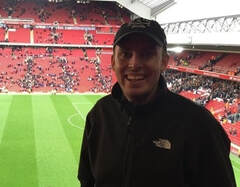A Brief Introduction
Sports is a domain that has grown significantly over the last 20 years to become a key driver of many economies. According to a recent report, the estimated size of the global sports industry is $1.3 trillion, and has an audience of over 1 billion. As the market has grown so has the amount of data that is collected. This means that there are a number of challenging problems in sports to predict and optimise performance but, so far, such problems have largely been dealt with by domain experts (e.g., coaches, managers, scouts, and sports health experts) with basic analytics.
The growing availability of datasets in sports presents a unique opportunity for the artificial intelligence (AI) and machine learning (ML) communities to develop, validate, and apply new techniques in the real world. In team sports, real-world data is available over long periods of time, about the same individuals and teams, in a variety of environmental contexts, thereby creating a unique live test-bed for AI and ML techniques. While research in AI for team sports has grown over the last 20 years, it is as yet unclear how they relate to each other or build upon each other as they tend to either focus on specific types of team sports or specific prediction and optimisation problems that are but one part of the whole field. Hence, this workshop will help fuel discussions in the area and bring together the AI and sports analytics communities to encourage new research that will benefit both communities and industry.
The growing availability of datasets in sports presents a unique opportunity for the artificial intelligence (AI) and machine learning (ML) communities to develop, validate, and apply new techniques in the real world. In team sports, real-world data is available over long periods of time, about the same individuals and teams, in a variety of environmental contexts, thereby creating a unique live test-bed for AI and ML techniques. While research in AI for team sports has grown over the last 20 years, it is as yet unclear how they relate to each other or build upon each other as they tend to either focus on specific types of team sports or specific prediction and optimisation problems that are but one part of the whole field. Hence, this workshop will help fuel discussions in the area and bring together the AI and sports analytics communities to encourage new research that will benefit both communities and industry.
Keynote Speakers
|
Patrick Lucey - STATSPerform
Title: Interactive Sports Analytics Abstract: Imagine watching a sports game and having the ability to find all plays which are similar to what just happened immediately. Better still, imagine having the ability to draw a play with the x’s and o’s on an interface, like a coach draws up on a chalkboard and finding all the plays like that instantaneously and conduct analytics on those plays (i.e., when those plays occur, how many points a team expects from that play). Additionally, imagine having the ability to evaluate the performance of a player or a team in a given situation and compare it against another player in exactly the same position. We call this approach “Interactive Sports Analytics” and in this talk, I will describe methods to find play similarity using multi-agent trajectory data, as well as predicting fine-grain plays. I will show examples using tracking data amassed from Stats Perform massive sports data archives. Finally, I will show how we can go beyond center-of-mass tracking (i.e,. dots) and capture body-pose information from broadcast video to take analysis to the next level. Bio: From 2015, I've been at STATS PERFORM where I am Chief Scientist and my goal is to maximize the value of sports data we have. Previously, I was at Disney Research for 5 years, where I conducted research into automatic sports broadcasting using large amounts of spatiotemporal tracking data. Previous to that, I was a Postdoctoral Researcher at the Robotics Institute at Carnegie Mellon University/Department of Psychology at University of Pittsburgh conducting research on automatic facial expression recognition. I received my BEng(EE) from USQ and my PhD from QUT, Australia in 2003 and 2008 respectively. I was a co-author of the best paper at the 2016 MIT Sloan Sports Analytics Conference and in 2017 & 2018 was co-author of best-paper runner-up at the same conference. Additionally, I have won best paper awards at INTERSPEECH (2007) and WACV (2014) international conferences. My main research interests are in artificial intelligence and interactive machine learning in sporting domains. Website: patricklucey.com |
Laurie Shaw - Harvard
Title: Dynamic analysis of team strategy in professional soccer Abstract: One of the most important tactical decisions that a soccer manager must make is to determine the spatial configuration of the team -- the formation -- during different phases of a match. The selection of formations influences how aggressively a team plays, where they focus their attacks, and their overall playing style. We present an innovative new technique for dynamically measuring, classifying and studying team formations in professional soccer matches. Using a large sample of player tracking data, we measure the relative positioning of each team’s players in and out of possession of the ball over successive time intervals during each match. Applying hierarchical agglomerative clustering – using the Wasserstein metric to measure distances between formations – we have identified the unique set of offensive and defensive formations that teams deployed. We use these formation templates, in combination with Bayesian model selection criteria, to classify new formation observations, producing tactical summaries of each match. We identify each team’s preferred offensive and defensive formations, and study how managers reacted tactically to key events during their matches. Finally, we discuss how disruption of defensive formation relates to chance creation, and discuss other potential applications of our methodology. Bio: Dr. Laurie Shaw is a research scholar at the Harvard Sports Analytics Lab and a fellow of the Harvard Data Science Initiative. He holds a PhD in computational astrophysics, and has previously worked in quantitative finance and for the British Government. His research currently focuses on sports analytics, applying statistical and machine learning techniques to extract information from tracking and event data. Website: eightyfivepoints.blogspot.com |
Mehrsan Java - Sportlogiq
Abstract: Sports analytics is about observing, understanding, describing, and predicting the game in an intelligent manner. In practice, this means designing a fully-automated, robust, end-to-end pipeline; from visual input, to player and group activities, to player and team evaluation, to planning. This talk will cover the components of such a system and provides examples of how Sportlogiq captures the data from videos and generate relevant insights in "real-time" for different stakeholders in the sport industry.
Bio: Mehrsan Javan is the co-founder and CTO of Sportlogiq. Mehrsan holds a PhD degree in electrical engineering (McGill University, 2014) and MBA (2017) with over a decade of experience in building intelligent systems. His passion is new technologies with a particular interest in intelligent systems and their positive impacts on our daily life. He is also an adjunct faculty member at ECE department, McGill University and has published numerous research articles in the fields of computer vision, machine learning, sport analytics and holds several patents and patents pending applications. His main research interest is explainability and causal inference in artificial intelligence.
Website: https://sportlogiq.com/en/
Bio: Mehrsan Javan is the co-founder and CTO of Sportlogiq. Mehrsan holds a PhD degree in electrical engineering (McGill University, 2014) and MBA (2017) with over a decade of experience in building intelligent systems. His passion is new technologies with a particular interest in intelligent systems and their positive impacts on our daily life. He is also an adjunct faculty member at ECE department, McGill University and has published numerous research articles in the fields of computer vision, machine learning, sport analytics and holds several patents and patents pending applications. His main research interest is explainability and causal inference in artificial intelligence.
Website: https://sportlogiq.com/en/
8th February 2020 - Hilton Midtown, New York (1335 6th Ave, New York, NY 10019, USA)


